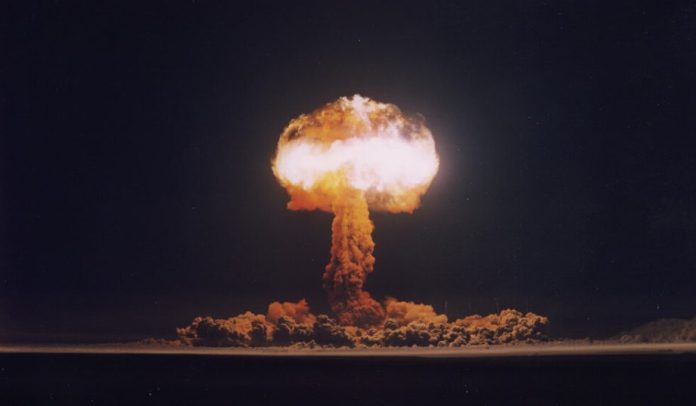У липні виповнюється 80 років з моменту ядерного бомбардування Хіросіми і Нагасакі — двох японських міст, що зазнали руйнівних наслідків від єдиного на сьогодні бойового застосування ядерної зброї. Тоді загинуло понад 200 000 людей, а ті, хто вижив, отримали важкі ураження і довічні наслідки.
Попри уроки історії, у 2025 році у світі все ще існує понад 12 200 ядерних боєголовок. Що ж станеться, якщо ядерна війна розпочнеться просто завтра? Наукова команда AsapSCIENCE створила відео з науковим моделюванням наслідків ядерного вибуху потужністю 1 мегатонна — в 80 разів більше за бомбу, скинуту на Хіросіму, але менше за більшість сучасних боєприпасів.
Ось як виглядає сценарій атаки: 35% енергії вибуху — це теплове випромінювання, яке поширюється майже зі швидкістю світла. Люди в радіусі до 85 км можуть тимчасово осліпнути. Опіки першого ступеня можливі на відстані до 11 км, третього ступеня — до 8 км. Температура в епіцентрі може досягати 100 мільйонів °C — це в п’ять разів гарячіше, ніж у центрі Сонця. Ударна хвиля руйнує все на своєму шляху: на відстані 6 км — вітер до 255 км/год і тиск у 180 тонн на стіни будинків. На відстані до 1 км швидкість вітру зростає до 756 км/год, що може зруйнувати навіть надміцні споруди. І навіть якщо людина виживе у момент вибуху, її життю загрожує смертельна доза радіації, що призводить до отруєння, ураження органів і смерті протягом днів або тижнів.
Дослідники наголошують: виживання у випадку ядерного удару — майже випадковість. Шанси залежать від багатьох чинників: погоди, часу доби, рельєфу місцевості, навіть кольору одягу. Приміром, світлий одяг може частково відбивати тепло, тоді як темний — його поглинає. Але ці деталі мало що змінюють для тих, хто знаходиться у найближчій зоні ураження. Людей просто випаровує, їхні тіла розкладаються до елементів — подібно до того, як сонце випалює пил. Навіть через 80 років після трагедій Хіросіми і Нагасакі світ не позбувся ядерної загрози. На тлі сучасних глобальних конфліктів і геополітичної нестабільності, ймовірність ядерного удару, хоч і низька, але реальна.
Наукове відео AsapSCIENCE — не просто гіпотетичне дослідження. Це нагадування про те, до чого може призвести людська недалекоглядність, і заклик до стриманості, дипломатії й контролю над ядерним озброєнням.


